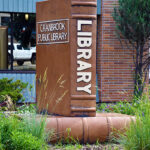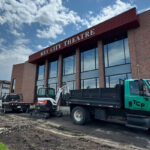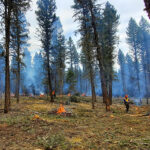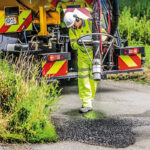Home »
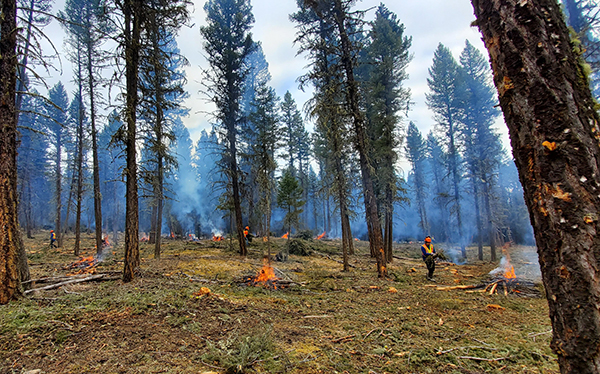
Woodlots BC to lead wildfire risk reduction efforts
The Forest Enhancement Society of BC (FESBC) recently approved up to $1.7 million to the Woodlot Product Development Council (Woodlots BC) to carry out wildfire risk reduction treatments over a two-year fiscal period.
Treatments will be conducted on woodlots throughout British Columbia (B.C.), each located within a Wildland Urban Interface, endorsed by the local Forestry District and following BC Wildfire Service (BCWS) wildfire risk reduction standards.
Through this work, Woodlots BC, established in 1998 to represent the interests of woodlot licensees throughout the province, looks forward to building capacity across the forest sector and helping promote innovative ways to complete treatment of wildfire risk reduction projects to reduce combustible forest fuel loading, thereby better protecting communities.
“Woodlots are vital to B.C.’s forestry sector as they support local jobs, keep our forests healthy, and help reduce wildfire risk where it matters most: right where people live,” said Ravi Parmar, Minister of Forests. “This partnership between Woodlots BC, BCWS, and FESBC is showing what’s possible when local knowledge and smart investments come together. These treatments are protecting communities today and helping us build more resilient forests for tomorrow.”
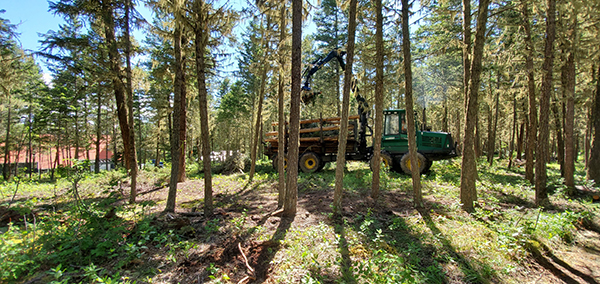 Woodlot tenures are unique to B.C., where public forested land is designated for management by families, small incorporated companies, or First Nations communities who hold licences to manage these areas, often in combination with privately owned land.
Woodlot tenures are unique to B.C., where public forested land is designated for management by families, small incorporated companies, or First Nations communities who hold licences to manage these areas, often in combination with privately owned land.
There are more than 800 woodlots across the province, with many in operation for more than 40 years, with some active for as long as 70 years. In many cases, these woodlots are located near urban centres, and their legally managed trails are frequently used by the public. As such, reducing wildfire risk, both within woodlots and in surrounding communities, is a key focus for Woodlots BC.
“Every year, between 5,000 to 10,000 hectares of woodlots are impacted by wildfire. Approximately 20% of woodlots are located in a Wildland Urban Interface and have a high or extreme wildfire risk,” explained Gord Chipman, Registered Professional Forester (RPF), Executive Director, Woodlots BC.
“With FESBC’s investments for new wildfire risk reduction projects, woodlots will have the opportunity to be proactive and take greater strategic action to better protect communities and people. These projects will be innovative and evolve with the involvement of BC Wildfire Service and local Forest Districts.”
Previous funding from BCWS facilitated the development of wildfire risk reduction prescriptions for many woodlots. Now, the new funding from FESBC will support the implementation of these treatments, specifically targeting areas deemed high to extreme risk for wildfire.
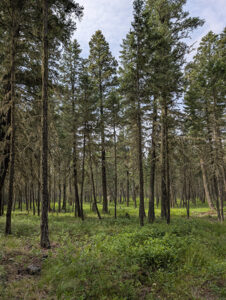 “This past winter, we worked with BC Wildfire Service to develop the new Fuel Management Prescription Guidelines. We are now looking at provincial risk mapping and confirming on-the-ground conditions to confirm areas of concern,” said Chipman.
“This past winter, we worked with BC Wildfire Service to develop the new Fuel Management Prescription Guidelines. We are now looking at provincial risk mapping and confirming on-the-ground conditions to confirm areas of concern,” said Chipman.
“We are using this opportunity to build relationships with staff at BC Wildfire Service and the Natural Resource Districts. We have engaged with eight different forest management professional companies to build capacity and utilize the guidelines that were developed recently.”
With official funding approval from FESBC this past April, Woodlots BC is working to finalize the identification of the highest-priority woodlot sites in the province, aiming to make investments in the land as efficient and responsible as possible.
“The average cost for treatment work in the past five years has been approximately $8,000 per hectare. With this in mind, we need to develop innovative methods to reduce wildfire risk and use the tools that we already have, such as heavy equipment, to reduce costs. If we combine this with smart fuel management prescriptions, we believe we can maximize the impact per dollar spent. With the $1.7 million investment from FESBC, we want to prove that we can reduce the cost for treatments with woodlot ingenuity and smart plans,” said Chipman, adding that the team hopes to get close to treating 400 hectares with the funding in the next two years.
In collaboration with FESBC, Woodlots BC has successfully completed a number of projects in woodlot tenures over the last 8 years, helping prevent and mitigate the impact of wildfires.
“We have been working with FESBC since 2017 and have enjoyed their pragmatic oversight and willingness to proactively invest in our forests,” noted Chipman. “It takes a team of knowledgeable people to look after our lands, and through teamwork, we will make the dream work.”
In 2024, with over $196K in FESBC funds, Woodlots BC completed a fuel management treatment totalling 23.7-hectares, adjacent to subdivisions at Partridge Road, Mallard Drive, Quail Road and Crane Road in the Cariboo Chilcotin Region near the community of 150 Mile House.
 The treatment units were identified as a high priority area by the Cariboo Woodlot Association and woodlot licence holders. The goal of this treatment was to reduce potential crown fire initiation, fire intensity, and crown fire spread. These fuel reduction treatments also helped improve access and firefighter safety in the event of wildfire suppression activities as well as the effectiveness of aerial and ground-based fire control actions.
The treatment units were identified as a high priority area by the Cariboo Woodlot Association and woodlot licence holders. The goal of this treatment was to reduce potential crown fire initiation, fire intensity, and crown fire spread. These fuel reduction treatments also helped improve access and firefighter safety in the event of wildfire suppression activities as well as the effectiveness of aerial and ground-based fire control actions.
“FESBC is excited to partner with Woodlots BC to support the delivery of innovative wildfire risk reduction treatments in collaboration with individual woodlot owners across B.C.,” expressed Tyler Field, RPF, Operations Manager with FESBC.
“Woodlot licensees are uniquely positioned to play a vital role in managing forested lands near communities, where the risk of wildfire is often highest. These treatments form part of coordinated, landscape-level efforts designed to reduce wildfire risk and help better safeguard nearby communities and critical infrastructure. We are committed to supporting cost-effective and proactive, community-based solutions that strengthen wildfire resilience across the province.”
Another similar wildfire risk reduction treatment, carried out by the Columbia Woodlot Association on Mount 7 near Golden., used a method known as machine mulching to clear land over 11 hectares of forest. This method utilizes a single machine to cut, grind, and clear vegetation, then redistributes the mulch to reduce the spread of potential wildfires.
“High recreation areas like Mount 7 can be points of human-caused ignition. Wildfire risk reduction in these areas is then critical to not only help slow the spread of ground fires, but also to protect the recreational values,” shared Denise English, Coordinator for the Columbia Woodlot Association.
“FESBC funding, combined with Columbia Basin Trust funds, enabled the Columbia Woodlot Association to complete a mulching research project to determine the efficacy of mulching in the Wildland Urban Interface. This is especially important in and around Golden where piling and burning is tough to pull off with very short burning windows due to temperature inversions.”
“Wildfire resilience is not a one and done event, and the land will need to be tended over time,” remarked Chipman, adding that “woodlot management can reduce wildfire risk if land managers and BC Wildfire Service work with woodlot managers to identify where the risks are and efficient ways to address the risk.”
Lead image: Woodlots in the Cariboo during treatment. Forest Enhancement Society of BC photos / Photo Credit: Gord Chipman
Forest Enhancement Society of BC


